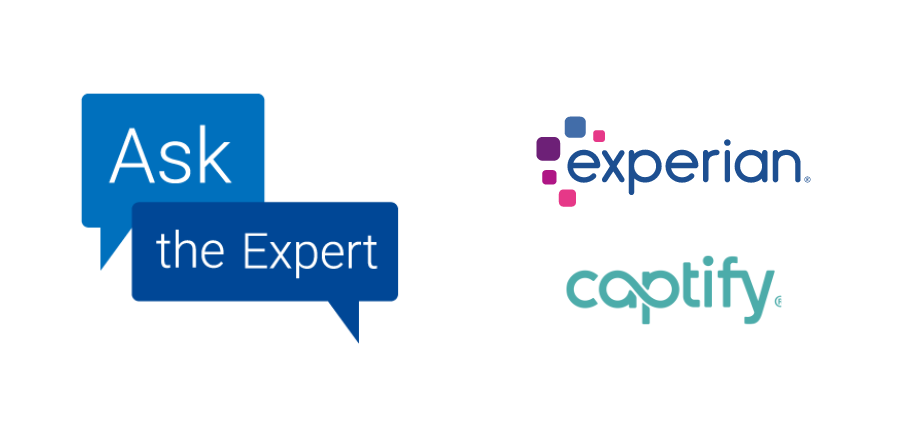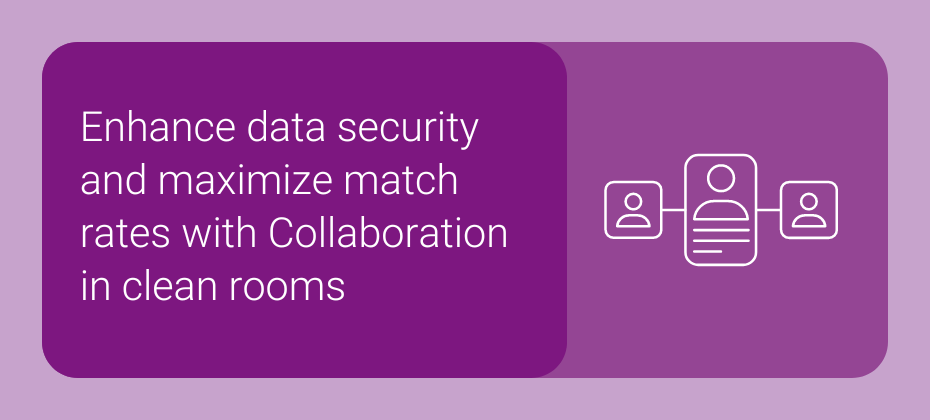
Marketing success can sometimes come in the most unlikely of combinations — reminiscent of a great chef crafting a delicious dish from ingredients rarely used together. In advertising, this type of outside-the-box thinking can give you a competitive advantage over peers who are operating within the normal limits. In this blog post, we will explore how both financial and non-financial advertisers can use consumer financial marketing data in their ad campaigns to connect with the right consumers. This type of strategic thinking will make campaigns more effective, resonate more deeply with audiences, and turn your chicken into coq au vin.
Background on Financial Audiences
FMCG Direct, a Deluxe company, in partnership with Experian, has developed financial audiences that deeply understand consumer financial behavior. These audiences are not just static lists of potential customers but are constantly updated to provide a multi-dimensional view of consumer financial habits, including investing, borrowing, credit card preferences, and more. Central to this effort are Consumer Financial Insights®, Financial Personalities® and ConsumerSpend® models. These tools are built utilizing a combination of FMCG Direct, a Deluxe company in-depth consumer research, sophisticated clustering techniques, and Experian’s extensive consumer marketing data.
FMCG Direct, a Deluxe company financial audience segments
The Financial Personalities® segments categorize consumers based on their financial behaviors and preferences, dividing them into distinct categories such as insurance, credit card usage, and investment habits. This allows for a targeted approach considering each consumer’s unique financial behavior and potential needs.
Meanwhile, Consumer Financial Insights® segments offer a detailed and tiered view of a consumer’s economic status, including insights into household deposits, investable assets, net assets, and the likelihood of mortgage refinancing, all categorized into specific tiers to reflect varying levels of wealth and investment.
Lastly, ConsumerSpend® segments provide a look at how and where a household allocates their disposable income. Broken up by nine unique categories, marketers can better understand where people are spending their money each year.
These predictive segments are built through extensive research, surveying over 25,000 consumer households across the United States. Each household’s financial profile encompasses a wide array of data points, such as total household assets, deposit balances, and investable assets.
The result? A granular understanding of consumer financial behaviors, which marketers can use to tailor their financial services offerings. However, the potential applications of these insights extend far beyond the confines of financial products and services.
Here are some ideas to help you get started.
Advertising campaigns for travel and leisure
Launch campaigns that precisely cater to different consumer segments’ unique financial personalities and spending behaviors.

- Credit Card Financial Personality: Launch digital ads for luxury travel experiences tailored to consumers known for extensive credit card usage in travel, capitalizing on their affinity for high-end leisure activities.
- Deposits (Bank) Financial Personality: Implement advertising campaigns for budget-friendly travel options tailored to consumers with modest bank deposits and prudent spending habits. These ads could highlight affordable vacation packages, discount travel deals, and value travel bundles, catering to those prioritizing cost efficiency and practical travel solutions.
Ideas focusing on home improvement and decor
Craft advertising campaigns aimed at audiences with modest net worth, using insights into their financial profiles to promote accessible and essential products and services.

- Net Asset Score (Lower Tiers): Develop ad campaigns for cost-effective home improvement services and budget-friendly home appliance options, targeting consumers whose net asset scores indicate more modest financial resources. These ads should highlight the products’ durability and energy efficiency, appealing to the consumers’ need for long-term savings.
- Discretionary Spend – Home Furnishing: Design ad campaigns for upscale home furnishing collections, targeting audiences with significant discretionary spending power. These ads should spotlight your home furnishings’ premium quality, sophisticated design, and superior craftsmanship, appealing to consumers’ tastes for luxury and exclusivity.
Campaigns for consumers in entertainment
Execute targeted advertising campaigns designed for consumers with high disposable income, utilizing insights from their net asset and investable asset scores.

- Net Asset Score (Higher Tiers): Launch advertising campaigns for premium entertainment experiences, including exclusive concert seats, backstage passes, and custom festival packages. Target consumers whose net asset scores suggest significant disposable income to ensure your promotions reach the most likely attendees.
- Discretionary Spend — Entertainment: Design advertising campaigns for high-profile music and entertainment events, focusing on individuals known for their significant expenditures on entertainment. Create promotions that resonate with their lifestyle, emphasizing the connection between a vibrant social life and exclusive entertainment opportunities.
As you can see by understanding and utilizing the nuances of financial data, advertisers can create highly targeted, relevant, and effective campaigns across various sectors. This approach exemplifies the innovative spirit of audience usage, proving that with a bit of creativity, data applications are as limitless as our imagination.
Financial Personalities and Consumer Financial Insight audiences and their in-platform names
Find these syndicated audiences in your demand and supply-side platform of choice.
- Insurance financial personality – Audiences to help understand a consumer’s behavior and confidence in their ability to find the right life insurance.
- Financial Personalities > Insurance Financial Personality
- Financial Personalities > Insurance Financial Personality
- Credit card personality– Used to identify consumers based on their credit card usage and behaviors.
- Financial Personalities > Credit Card Financial Personality
- Financial Personalities > Credit Card Financial Personality
- Deposits financial personality– These audiences include consumers who are likely to look for bank offers based on their spending behaviors.
- Financial Personalities > Deposits Financial Personality
- Financial Personalities > Deposits Financial Personality
- Investments financial personality– Audiences to help understand a consumer’s comfort and behaviors with making financial investments.
- Financial Personalities > Investments Financial Personality
- Financial Personalities > Investments Financial Personality
- Home equity financial personality– Audiences to help understand a consumer’s home equity circumstances and behaviors.
- Financial Personalities > Home Equity Financial Personality
- Financial Personalities > Home Equity Financial Personality
- Mortgage financial personality– Audiences to help understand a consumer’s behavior and preferences with mortgages.
- Financial Personalities > Mortgage Financial Personality
- Financial Personalities > Mortgage Financial Personality
- Investable assets (FLA/Fair Lending Friendly)*– Audiences that include consumers who have available investable assets in seven total tiers with Tier 1 being the highest, and Tier 7 being the lowest.
- Consumer Financial Insights > Investable Assets
- Consumer Financial Insights > Investable Assets
- Net asset score (FLA/Fair Lending Friendly)– Predict a consumers likely net asset score ranging from less than $25,000 to over $5,000,000.
- Consumer Financial Insights > Net Assets Score (Net Worth)
- Consumer Financial Insights > Net Assets Score (Net Worth)
- Discretionary spend– Predicts the annual discretionary spend for the category listed in the audience.
- Consumer Financial Insights > Discretionary Spend – Travel
- Consumer Financial Insights > Discretionary Spend – Jewelry
- Consumer Financial Insights > Discretionary Spend – Home Furnishings
- Consumer Financial Insights > Discretionary Spend – Entertainment
- Consumer Financial Insights > Discretionary Spend – Electronics
- Consumer Financial Insights > Discretionary Spend – Education
- Consumer Financial Insights > Discretionary Spend – Donations
- Consumer Financial Insights > Discretionary Spend – Dining Out
- Consumer Financial Insights > Discretionary Spend – Total
- Consumer Financial Insights > Discretionary Spend – Clothing/Apparel
- Household deposits/balances (FLA/Fair Lending Friendly)– Audiences that include households that have bank deposits balance in six total tiers with Tier 1 being the highest, and Tier 6 being the lowest.
- Consumer Financial Insights > Household Deposits/Balances
- Consumer Financial Insights > Household Deposits/Balances
- Investment Balances (FLA/ Fair Lending Friendly)– Audiences that include consumers who have an investment balance in six total tiers with Tier 1 being the highest, and Tier 6 being the lowest.
- Consumer Financial Insights > Investment Balances
- Consumer Financial Insights > Investment Balances
- Mortgage refinance (FLA/Fair Lending Friendly)– Predicts the likelihood the consumer is to refinance their mortgage.
- Consumer Financial Insights > Mortgage Refinance
- Consumer Financial Insights > Mortgage Refinance
Footnote
* “Fair Lending Friendly” indicates data fields that Experian has made available without use of certain demographic attributes that may increase the likelihood of discriminatory practices prohibited by the Fair Housing Act (“FHA”) and Equal Credit Opportunity Act (“ECOA”). These excluded attributes include, but may not be limited to, race, color, religion, national origin, sex, marital status, age, disability, handicap, family status, ancestry, sexual orientation, unfavorable military discharge, and gender. Experian’s provision of Fair Lending Friendly indicators does not constitute legal advice or otherwise assures your compliance with the FHA, ECOA, or any other applicable laws. Clients should seek legal advice with respect to your use of data in connection with lending decisions or application and compliance with applicable laws.
Latest posts

Have you wondered how the shift toward real-time data is reshaping the way companies connect with consumers? Traditional methods of third-party data collection and…

It’s hard to believe, but it’s almost time again for marketers to begin their holiday campaign preparations. Leading up to these preparations, it’s important…

At Experian, we power data-driven advertising through connectivity. Today, we’re excited to introduce our newest offering, which helps drive that connectivity: Experian’s Collaboration in…